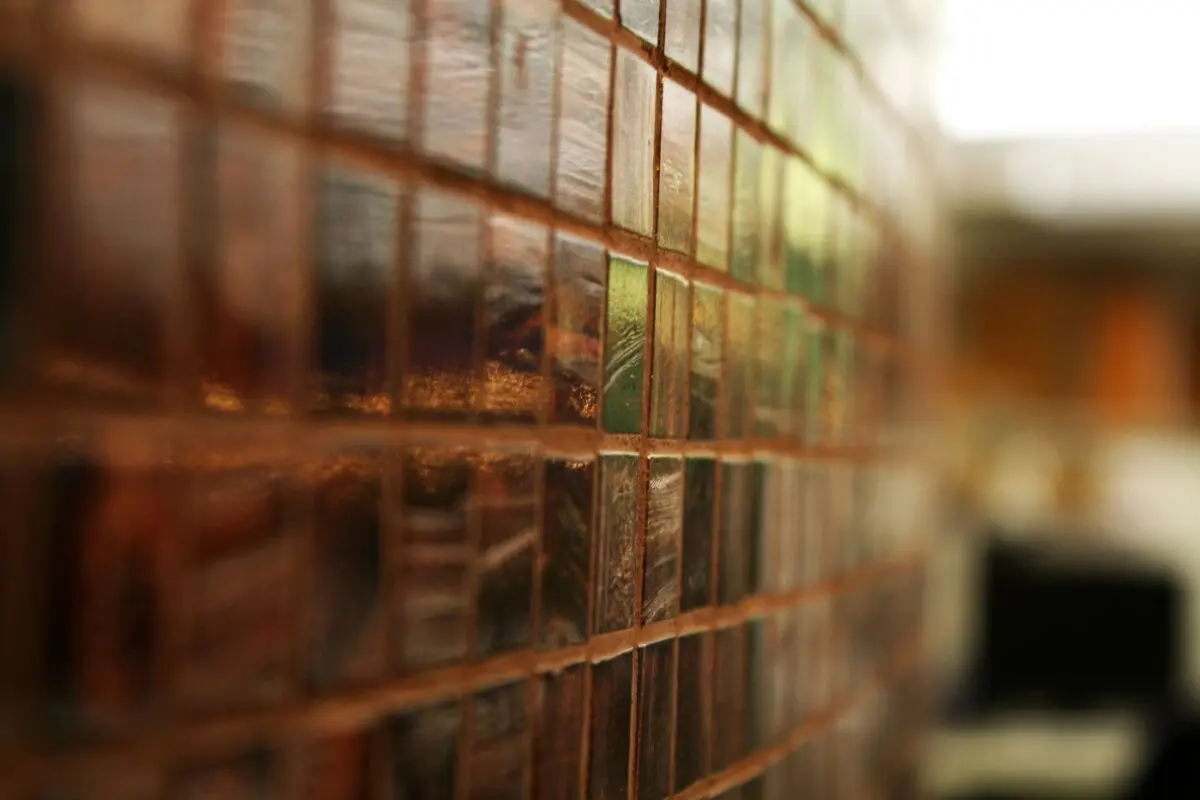Even if the tile in your home was expertly installed, there will probably come a point where you need to confront the prospect of having to regrout tile.
Wherever tile is regularly exposed to moisture—like the bathroom, the kitchen and even the laundry room—grout comes under stress. Even if that grout has been properly sealed, over time it can crack, crumble and accumulate dirt and grime.
In addition to this being sort of gross to look at, cracked, crumbled grout can lead to bigger issues. When water can seep under the tiles, it can lead to water damage, loose tiles and even mold, all of which are problems that are more expensive and time-consuming to fix. So unless you love mold removal and drywall repair, it’s a good idea to just fix the grout.
The good news is that you don’t need any special skills or expensive tools to tackle this project. You don’t even need to fully remove all the old grout before you put a new layer of grout on, if you do the proper work to prepare it.
While you absolutely will have to remove some of your existing grout, with a little grunt work and some solid preparation, you can get this job done in a weekend. Our article “How Long Does Tile Take to Dry” will give you some idea of the total time this project will take.
Let’s get going.
Choose Your Grout
First, choose your grout. The most common types of grout are cementitious (either sanded or unsanded) or epoxy (sanded or unsanded). There are a few factors that will help you decide on the type of grout that will work best for your space.
Cementitious grout combines sand, cement and an additive that retains water. It’s easier to work with than epoxy because the additive prevents the prepared grout from hardening too fast. It’s a solid option for any space but needs to be sealed for water resistance.
The differences between sanded and unsanded cement grouts are both aesthetic and practical. The sanded variety, obviously, has a sandy look and feel to it. It’s best on grout lines 1/8 inch thick or wider. Any narrower and the sand particles can create problems with bonding.
Sanded grout is a great choice for a tile floor in a high-traffic area because it tends to be very stable. The sand can scratch delicate materials, but is typically fine with glass and ceramic tiles.
Unsanded grout is your better bet for joints narrower than 1/8 inch wide. It tends to crack in wider joints. This kind of grout uses very fine polymer particles, giving it a smooth look and feel.
Unlike sand, those polymers aren’t abrasive, so unsanded grout should be your go-to for a polished tile surface like marble. Unsanded grout isn’t ideal for floor tiles, but it’s perfect for vertical surfaces since it’s more adhesive than sanded grout and will stick better as you apply it.
Epoxy grout is less porous than the other types, as it’s made of epoxy resins. It’s waterproof and it resists stains better than cementitious types. It’s excellent for shower tiles, backsplashes, general bathroom tile and any place that gets a lot of moisture.
To grout over top of old grout, your best results will be with epoxy over cement grout. Epoxy bonds faster and forms a stronger bond than cement grout, so it will adhere better.
The real key to adding a second layer of grout that will last, regardless of grout type, is ensuring there’s enough depth in each grout joint that the grout can stick to the edges of the tile. Epoxy grout’s stronger adhesion means you can get away with removing less of the old grout.
Gather Your Tools

Once you’ve decided on your grout, gather your materials. You’ll need:
- Utility knives or razor blades
- A manual or power tool to remove top of old grout
- If you opt for a power tool, an oscillating tool or a reciprocating saw fitted with a grout removal attachment are your best choices. You could also use a rotary tool or, for larger projects, an angle grinder.
- For smaller jobs, or if a manual grout removal tool is more your speed, you’ll have your pick of grout saws, a grout rake or scraper-type hand grout removal tools. A flat-headed screwdriver or chisel could also do in a pinch.
- Shop vacuum
- Dust mask and eye protection
- Old toothbrush
- Small bucket
- Rubber grout float
- Grout sponge
- Margin trowel
- A damp cloth or two
- A dry cloth
You can find the right tools at your local hardware store or borrow them from a friend or neighbour. Tool sharing is a great way to cut down on waste and make your projects greener.
How to Regrout Tile Without Removing Old Grout
Prepare the Joints
The first step, ironically, is to remove all loose, crumbling and dirty grout. This is a slow process, but power tools can really shave some time off, as they usually do. Go slowly with power tools to avoid accidentally damaging the tile. Trade the power tool for a razor blade or utility knife on difficult corners.
Regardless of whether you use a power tool or a manual method to remove the loose grout, wear your dust mask and eye protection. Safety first.
Fine Homebuilding’s Sean Boyle recommends removing all grout to half the depth of the tile. “The idea,” he says, “is to provide enough depth” for the new grout to adhere to the old, as well as to the edge of the tile. That could be as much as a ¼ inch depth or as little as a few millimetres.
Since the regrouting process is such a pain in the ass, it’s better to take out more than you think you need. If you attempt a skim coating, you risk having the new grout not bond correctly and then having to do the whole thing over again in a few months.
Clean the Site
Vacuum up all dust and wash the work area. When dry, tape off any trim or painted areas.
Mix Your Grout
From this point on, you’ll be applying grout in the same way you would with new tile. Mix dry grout with water according to the directions on the bag of grout. You’ll know it’s the right consistency when it stirs like peanut butter.
Remember to add a little water at a time to the dry powder. You can always add more, but you can’t take it out. Keep any dry remaining grout for future repairs.
Apply Grout to Tile
Use a plastic trowel to apply the fresh grout on top of the existing grout. A margin trowel is an excellent tool for getting into tight spaces. Put a large dollop onto the trowel, but not so much grout that it runs over the sides. Apply enough to fill the joints.
Work Grout into Joints
Take the grout float and press the grout into the joints evenly, moving the float at a 45-degree angle to the surface you’re working with. Work in small areas, a few square feet at a time.
Remove Excess Grout
Remove excess grout by going over the surface with the float at an 80-degree angle. Wait 15 minutes, then gently wipe off the grouted area with a damp sponge or cloth, smoothing out any uneven spots. Be careful not to use too much water or you’ll compromise the structural integrity of your layer of new grout.
Keep rinsing the cloth or sponge in a bucket of clean water as it gets dirty or regularly swap out a fresh sponge.
Buff Out Grout Haze
Let the tile sit for another half an hour, then use a dry cloth to buff out any grout haze still on the surface of the tile.
The grout will need some time to cure before the tile can be used. If you’ve picked a certain colour of grout and it looks off, don’t panic. The colour usually looks darker when it’s wet.
To keep your new, clean grout in good condition, seal it with a grout sealer before use.
Grout repair is a simple process as long as the tiled surface is well prepared, and as long as you’re well prepared to do a bit of work and take a little time.
Want to see the process in action? Check out these examples of techniques to try.
Feature image: Quinn Dombrowski; Image 1: Anne Nygård



How long does it take to re-grout a patio 123″ x 69″?? What would be a fair price? One guy is asking $60.00 per hour. How long to dry?